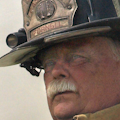So, you think you're ready for the "big one."
A week ago, most of us sat around decrying the lack of fire activity, but major fire events that have occurred in the past several days are rapidly making this the week of the "big one" – actually, make that the "really big one."
It started in Detroit on Tuesday when winds toppled power lines and started 85 fires within a four hour period. As residents complained that 911 calls were going unanswered, Detroit fire officials called on neighboring departments for help, something that hasn't happened since the riots of 1967. As residents and officials argue about how the fire storm was handled, Fire Commissioner James Mack said, that if he had a repeat of Tuesday's conditions, he would have called for help sooner.
On Wednesday, brush fines in Staten Island, NY burned for nearly 8 hours as units from Brooklyn and Manhattan were sent to battle the flames. Meanwhile, in Baltimore, a number of multiple alarm fires depleted the department's resources, causing the city to call in help from as far away as Washington, DC.
A fire near Boulder, CO destroyed 170 homes, more than any other blaze in Colorado history. It's still burning and over 800 firefighters from 20 states are on the scene.
Then yesterday, a massive fireball fueled by a ruptured natural gas line, destroyed at least 53 homes and left at least four dead and many injured in San Bruno, CA. The initial explosion fractured water mains in the area further complicating firefighting efforts.
What all of these incidents have in common is that a massive amount of additional firefighting resources were needed quickly to quell the flames and tend to the injured. And, except for Staten Island, the responding departments had to reach out into uncommon mutual aid territory for assistance.
People involved in the San Bruno incident tell me that the mutual aid response went relatively smoothly as state agencies Cal Fire and the California Emergency Management Agency helped coordinate movement of apparatus and air support from outside the immediate area, as they would do in a wildland fire.
While all of us have some type of mutual aid system in place that we use for incidents that we commonly encounter, you might want to take a minute or two and contemplate what might happen if a disaster of this week's proportions were to strike in your response area.
Keep in mind that all of these incidents required over 150 firefighters each to control. What plans do you have to bring that amount of staffing to the scene of your incident? At the San Bruno fire, the use of retardant air drops slowed the fire's spread until ground units could get into operation. Do you have any air capability resources that could be utilized on fast-spreading building fires? What if you are a city department and find that no hydrants in the area are operational? Do you have plans in place for neighboring departments to respond with tankers/tenders?
If you are looking for a place to start, go to www.mabas.org and use the drop downs across the top to check out the organizational resources available there. The Mutual Aid Box System was started in the 60s in northern Illinois and since, has branched out to cover Wisconsin, Iowa, Indiana, Michigan and Missouri.
During the recent Fire Rescue International show in Chicago, they held a deployment exercise and were able to amass 270 rigs and over a thousand personnel at three staging points around the Chicago area within 90 minutes. The photo here by my friend Larry Shapiro, shows the northwest staging area.
Luckily, these large-scale incidents are not very common, and it's unusual to have four in one week. Maybe these are wake-up calls for us all.
About the Author

Capt. Dave Fornell
Captain David P. Fornell is active as a line officer in the Casstown Community Fire Department, Casstown, OH, protecting 88 square miles of rural area in and around Casstown, Ohio. He formerly held the rank of Captain of the Beckerle & Company, Hose Company, Engine #9 of the Danbury, Connecticut fire department protecting a busy city of 85,000, and was the full time Chief of the Westchester, Illinois fire department, a suburb of Chicago. He started his career as a firefighter in the Addison, IL Fire Department, located about 20 miles west of Chicago. Capt. Fornell is a certified fire service instructor specializing in engine company operations, company officer development and fire ground safety courses and he holds the rank of Honorary Battalion Chief of the FDNY. He is the author of "FIRE STREAM MANAGEMENT HANDBOOK" along with an accompanying training video published by Fire Engineering Books and Videos, and served seven years as the Executive Editor of FIRE APPARATUS magazine. Capt. Fornell has written articles for FIRE ENGINEERING and FIREHOUSE magazines in the U.S., FIRE AND RESCUE and MILITARY FIREFIGHTER in the United Kingdom. He has hosted the rural water supply, engine company operations and line officer training segments of "THE FIRST LINE SUPERVISOR" for the FETN television network.
